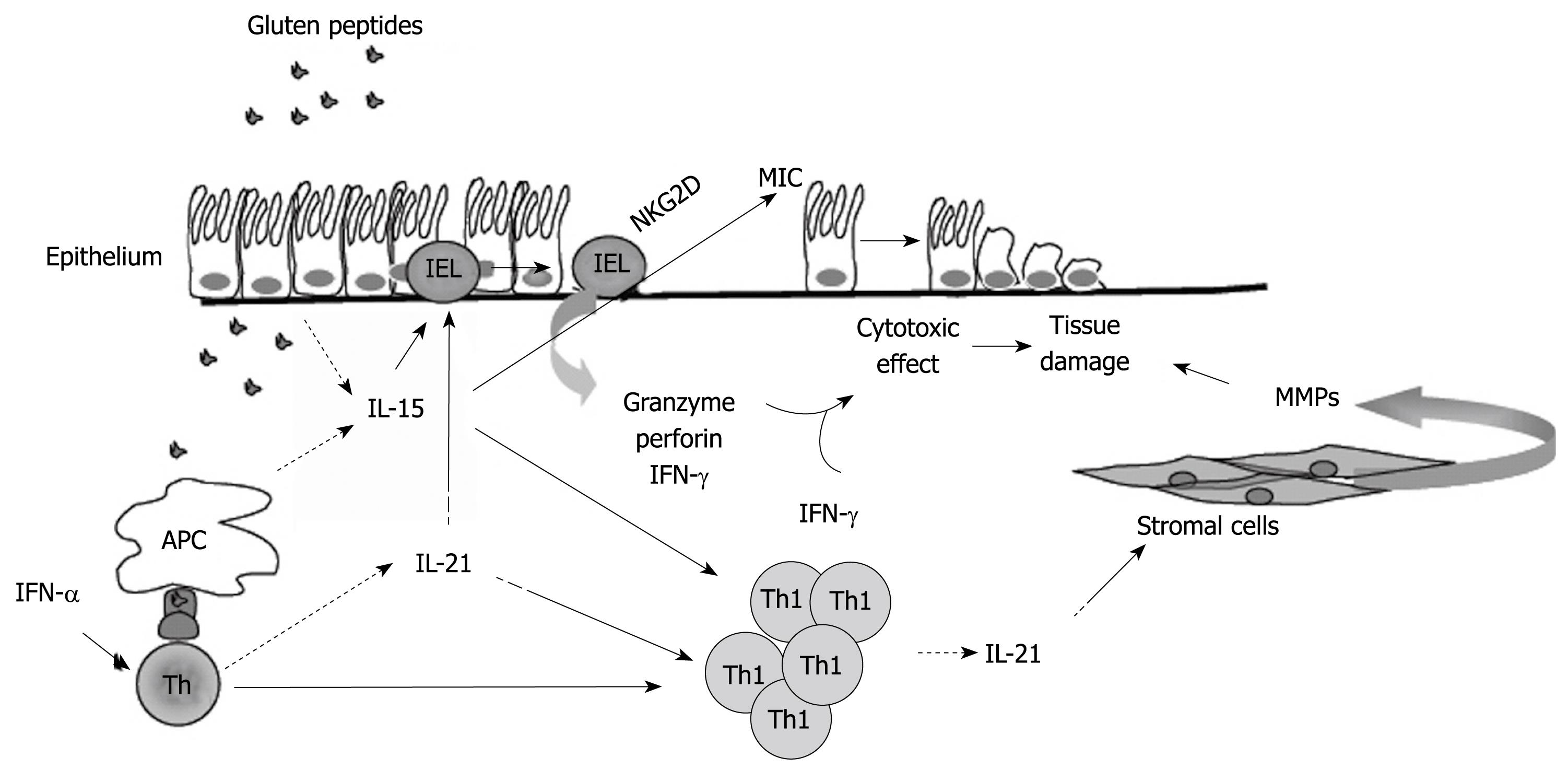Copyright
©2009 The WJG Press and Baishideng.
World J Gastroenterol. Oct 7, 2009; 15(37): 4609-4614
Published online Oct 7, 2009. doi: 10.3748/wjg.15.4609
Published online Oct 7, 2009. doi: 10.3748/wjg.15.4609
Figure 1 Hypothetical view of the pathogenic effects of IL-15 and IL-21 in celiac disease.
In active celiac disease mucosa, IL-15 is produced by epithelial cells and antigen presenting cells (APC) in response to gluten stimulation. APC also produce interferon (IFN)-α, which stimulates CD4+ T cells to polarize along the Th1 pathway. IL-21 is produced by activated CD4+ T cells, including Th1 cells. IL-15 activates various pathways, which lead to the lysis and death of epithelial cells. IL-15 augments the production of granzyme B by IELs and IFN-γ by IELs and Th1 cells; enhances the expression of the activating NGK2D receptor on IELs; induces the NKG2D ligand, MICA, on epithelial cells. IL-21 seems to contribute to the tissue-damaging immune response in CD, given that this cytokine is able to enhance the production of perforin by IELs and IFN-γ by T cells, and to stimulate stromal cells to make extracellular matrix-degrading metalloproteinases.
- Citation: De Nitto D, Monteleone I, Franzè E, Pallone F, Monteleone G. Involvement of interleukin-15 and interleukin-21, two γ-chain-related cytokines, in celiac disease. World J Gastroenterol 2009; 15(37): 4609-4614
- URL: https://www.wjgnet.com/1007-9327/full/v15/i37/4609.htm
- DOI: https://dx.doi.org/10.3748/wjg.15.4609









